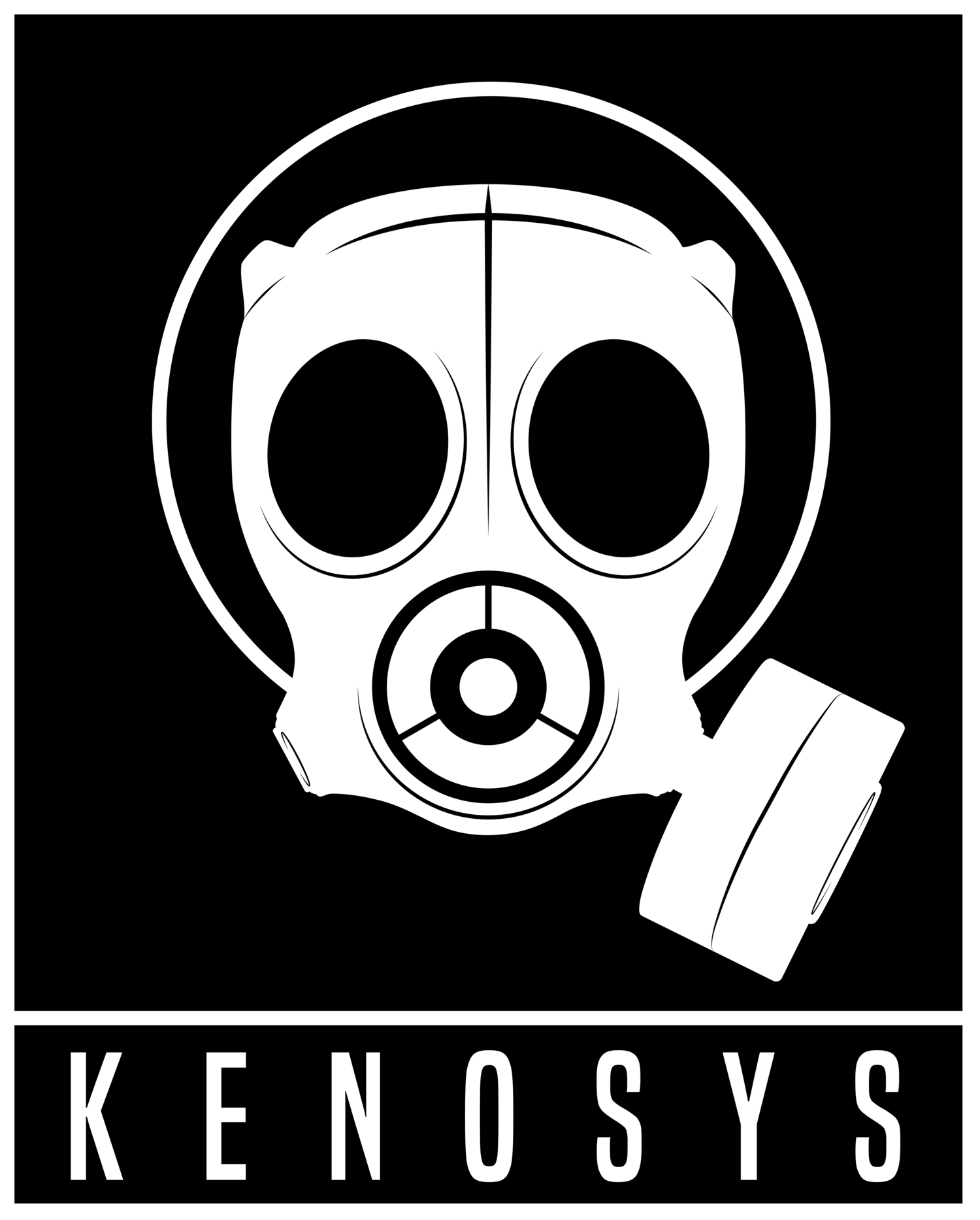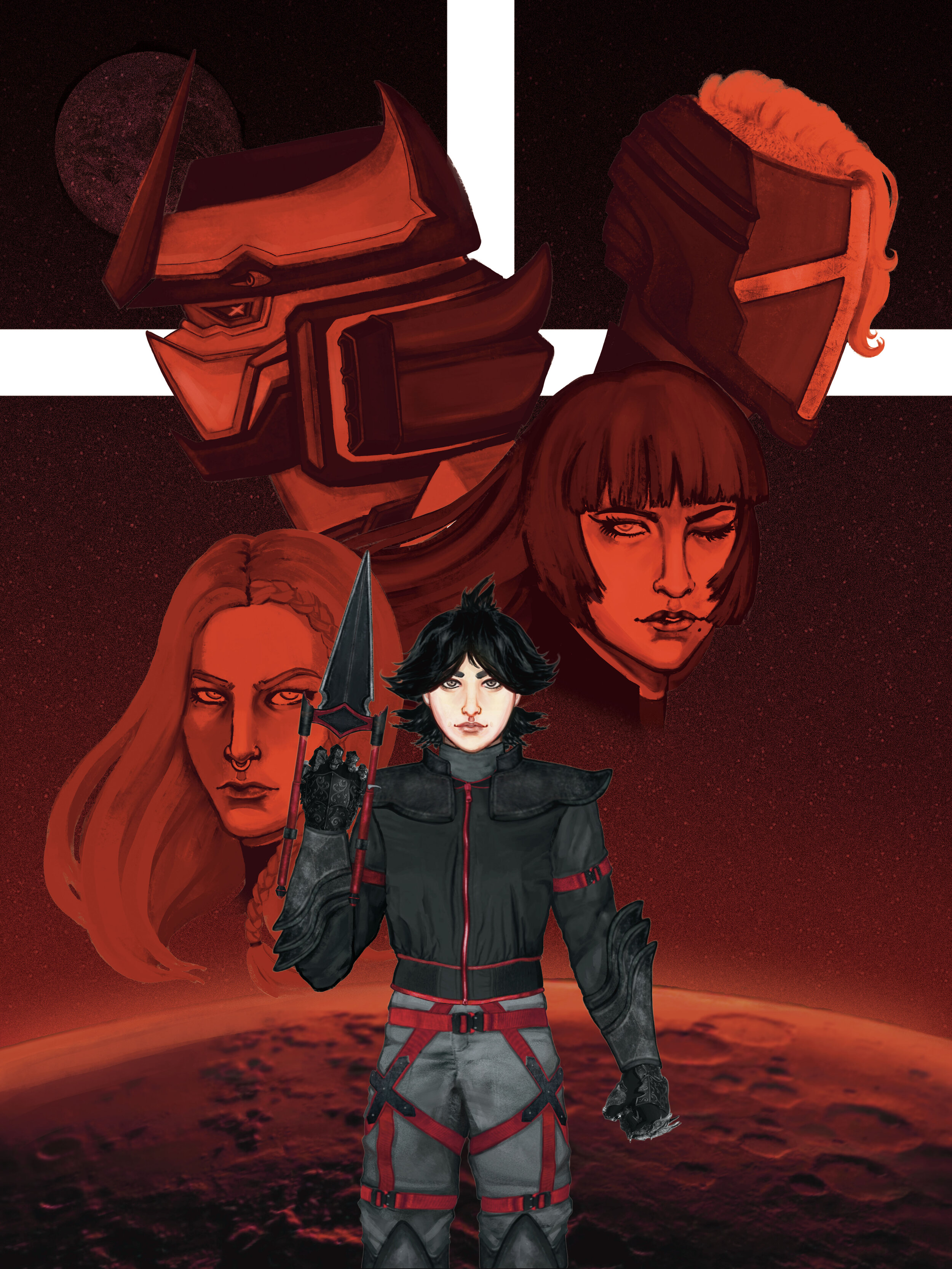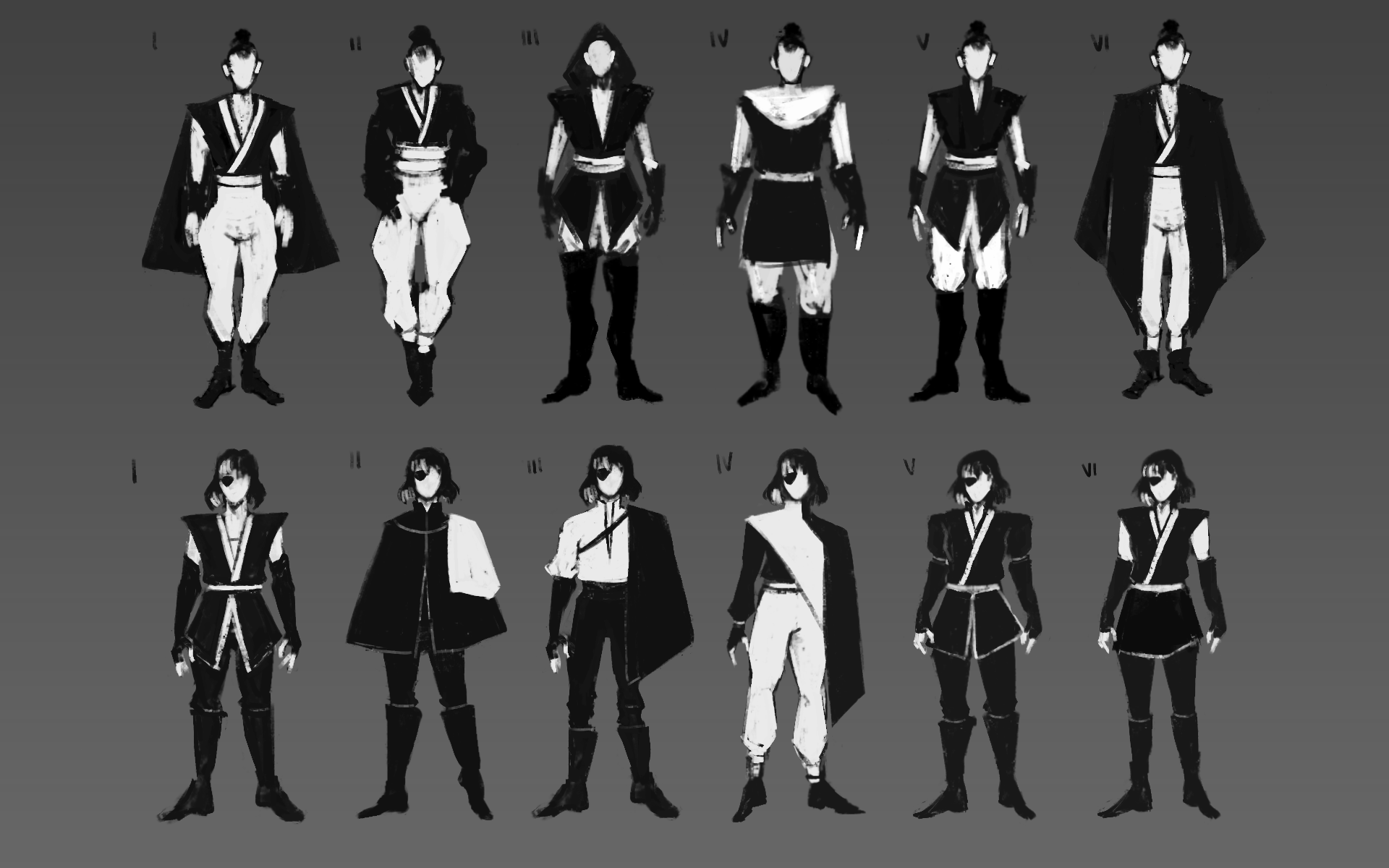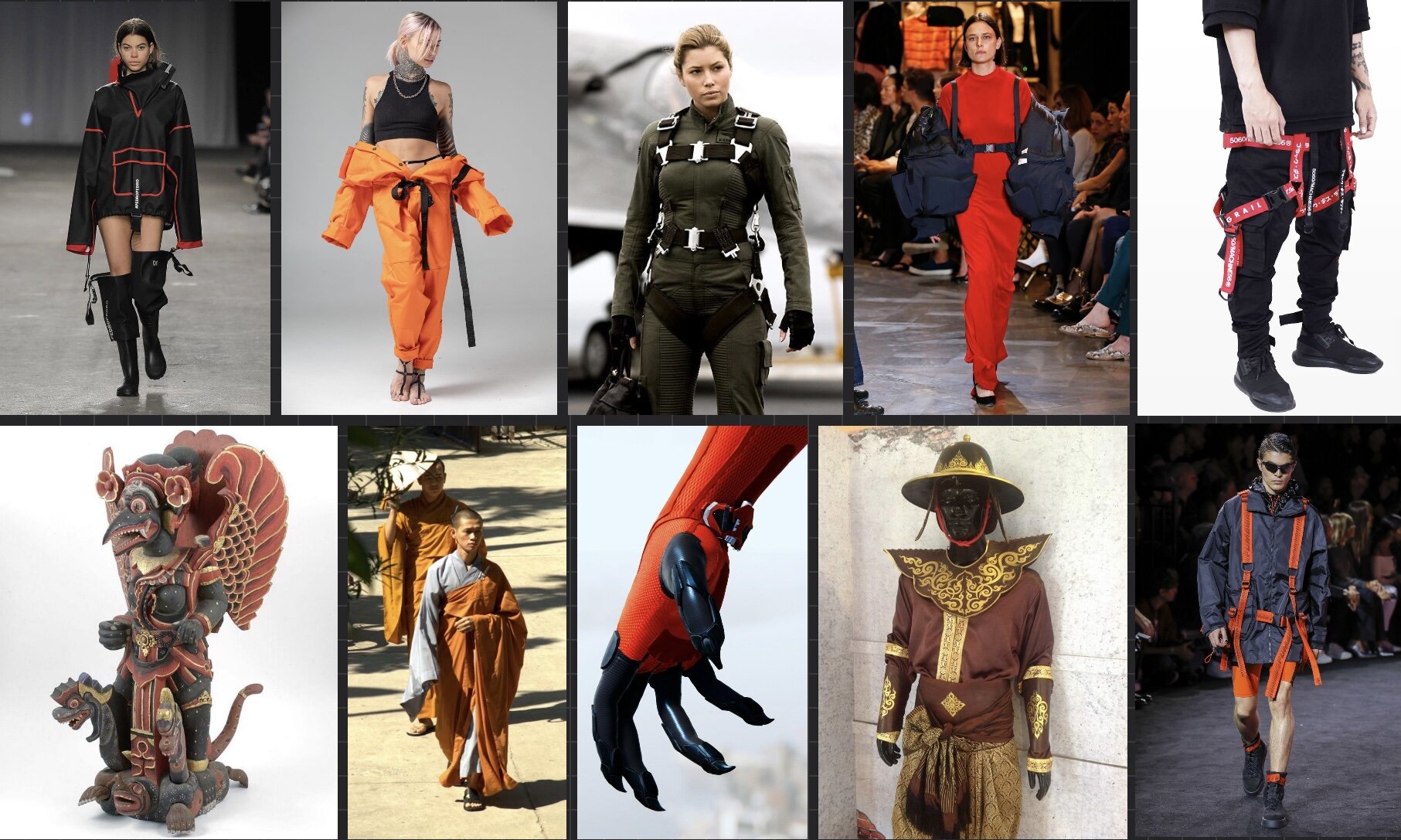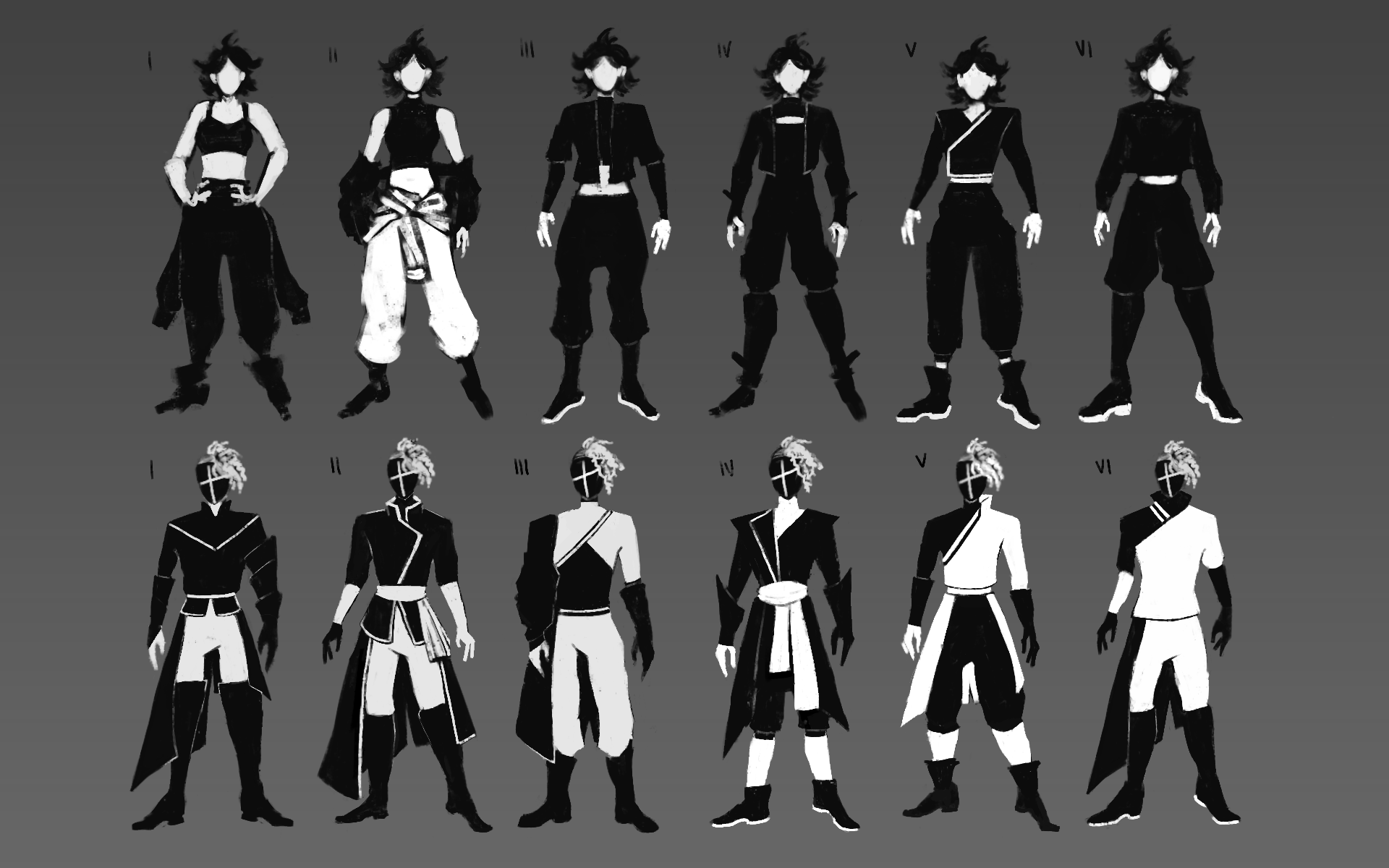PLOT SUMMARY
In 2123, religious fundamentalists hailing from a recently-colonized Mars launched a terrorist attack on Earth’s space elevators, shattering the 80 years of peace that had blessed humanity since it cast aside its nuclear arms in the name of a brighter future. Enraged, the governments of Earth coalesced their military might into the United Terrestrial Coalition. Seeking retribution against the colonies, the UTC created giant nuclear-powered mechs known as Vectors, and recruited Earth’s best Arbiters to pilot them.
A century later, the UTC found itself engaged in its largest conflict yet — a seemingly eternal battle against the Martian zealots, now christined Dominus Aeternum, and the Coalition’s own fleet of newly conscripted young Arbiters.
Then, during the Holy War’s most decisive battle yet, a flash of divine light ripped through the void of space, taking the lives of countless soldiers and bringing an end to generations of conflict. At the epicenter of the blast lay a single Vector.
2223. No explanation for what has come to be known as the “God’s Light Incident” has ever been found. Its legacy lives on in countless memorials, and in a handful of survivors and newborns who are marked by ashen white hair, unusual physical deformities, and unexplained illnesses.
Earth lies in ruin, but the Coalition has taken control of most of the vast reaches of space and is set to unveil its newest generation of Arbiters and Vectors to secure its rule over the solar system. But a remnant sect of Dominus Aeternum has its eyes set on these advanced Vectors, and they aren't alone: a burgeoning band of terrorists calling themselves Garuda are preparing to make a move of their own. When a decisive battle for the machines throws young Arbiters Isaac and Kavi into the hearts of the UTC’s two greatest enemies, the ghosts of the first Holy War begin to return for answers — and revenge.
DOMINUS AETERNUM
DESIGN
The soldiers of Dominus Aeternum are colloquially referred to as “the Crusaders” — and the historical equivalents were their primary design inspiration.
The Crusaders are a relatively low-tech faction, both out of ideology and necessity, so the majority of their armor and weaponry is appropriated from the United Terrestrial Coalition. The silhouettes and shapes within needed to be just as coldly utilitarian as you’d expect a military-industrial hyperpower to produce, but decorative elements like capes, jewelry, and silver detailing imbue them with a certain ethereal quality. Additionally, Crusader flight suits preserve their medieval origins: the chestplate creates the classic draped shape of a traditional knight’s coif, and a spur-like device allows Arbiters to connect to their Vectors.
REINER + ISAAC
Most Crusaders wear white, but those in the higher ranks are adorned with black uniforms inspired by the Knights Hospitaller. Reiner is a Throne, or second-in-command, so her casual, ceremonial, and flight suit looks all draw directly from historical reference. While Isaac’s outfit reflects more of a high-fashion approach, colorblocking helps signal his place in the group: a black shirt over a mostly-white base contrasts a lower rank with membership in Reiner’s elite squadron.
As Dominus Aeternum’s base of operations on Earth is located in the middle of an arid desert, the loose, draped nature of both Reiner and Isaac’s outfits is twofold: they aren’t too restrictive or bulky, and remain loose enough that a flight suit could be comfortably worn underneath if need be. And since Reiner fights with a polearm, potential outfits were specifically designed to allow for as wide a range of mobility as possible.
Reiner’s final design highlights various aspects of her personality and history.
Being the Crusaders’ most lethal force and fiercely protective of her men means she is always prepared for combat with her corseque, which can be transformed into a single-pronged spear or flattened into a cross-shaped blade to be carried as a standard. And, like most Crusader weaponry, it has plasma-cutting capabilities; striking the fear of heavenly, deadly light into all unfortunate enough to meet it.
Her eyepatch covers the burns she received during the God’s Light Incident without hiding them completely, and the rosary she wears is crafted from one of the many pieces of shrapnel pulled from her body as she recovered.
Reiner’s helmet is a special piece of equipment as well: the GLI left her with a strange respiratory ailment, and the built-in oxygen mask functions as both a respirator and drainage system for any blood expelled when pushing her physical limits during combat. It can be detached from the helmet and worn on its own when she needs some extra help recovering from particularly intense battles.
The ashes lining her remaining eye act as a final touch to tie the whole design together: a shield against the harsh desert sun, and a symbol of tears shed for her fallen comrades.
Isaac is a character built on contrasts, and his design reflects that. He is timid and wary of war, and both his conscription into the UTC and capture by the Crusaders force him to reconcile his nature and beliefs with the world around him.
His Crusader uniform is delicate and flowing, while his flight suit is covered with heavy, bulky armor to reinforce his role as his squad’s shieldbearer.
The hammer he wields is a reminder of the weight and burden of battle; a simple instrument of war with no flashy gimmicks or elegance.
Finally, the scars above his left eye act as both a permanent memento of his time in the UTC, and a small but meaningful indicator of the price of continuing to fight.
GARUDA
DESIGN
Garuda finds its namesake in the birdlike creature of Hindu legend, and Southeast Asian art and costuming plays a huge role in defining its striking aesthetic. This is especially observable in the wing-shaped forms and decorative filigree spanning much of Garuda’s armor.
Despite being a relatively small organization, the members of Garuda possess a diverse skillset. Their notorious hijackings of rare materials and equipment, as well as the support of a mysterious benefactor, have allowed them to create high tech armor systems to supplement the inexpensive uniforms and flight harnesses they’ve been using since their humble formation. With flamelike silhouettes and a gray-red palette evocative of ash and ember, Garuda operatives take care to remain fashionable while obscuring their identities.
HANBEC + KAVI
Though Garuda isn’t a military, its operatives prefer to stay inconspicuously combat-ready at all times. Because of this need to blend in with a crowd, both Hanbec and Kavi’s outfits draw heavily from functional yet fashionable streetwear trends, like techwear.
Garuda’s non-traditional structure sees no need for ranks, so creating a visual indication of hierarchy wasn’t a major concern. However, as its newest member (and especially as one escaping an oppressive military lifestyle), Kavi’s design had to convey a lively, playful attitude as opposed to that of a more seasoned fighter. On the other hand, since Hanbec is Garuda’s beloved leader and revered for his combat prowess, his outfit leans much more heavily into the warrior aesthetic while still retaining a fun, flamboyant flair.
Hanbec’s final design is an expression of the many ways he is perceived, from enemies and allies alike: a raging demon in the flesh to the Crusaders, an extremely problematic and elusive threat to the UTC, and a strange but frighteningly capable leader to his fellow members of Garuda.
Hanbec willfully plays into these contradictions himself; from assuming the name of a UTC war hero while literally masking his identity, to his deceptively simple yet striking armor and clothing, to his insistence on hiding every possible identifier on his body… except for his hair and right hand.
This reliance on deception as his greatest tool extends to his battle strategy: though Hanbec’s zweihander has a fearsome appearance, he prefers to use it in a more traditional fashion, employing counterattacks and bluffs to overcome superior numbers and even skill.
Despite his strangely playful nature, the Crusaders’ assessment of Hanbec is not without reason. Trading in the Crusaders’ plasma-equipped weapons for a shining, flame-cutting blade dubbed the “Wings of Cinder Greatsword” and bearing red-tinged horns on his helmet, Hanbec hides a deadly capability for combat his opponents have learned not to reckon with — and the strange pleasure he takes in neutralizing his enemies has unsettled a great number of onlookers.
Constantly admonished by her superiors in the UTC for her reckless and carefree nature, Kavi brings a (quite literal) sharpness to Garuda’s roster.
While her padded bomber jacket, baggy flight suit, and sock sneaker-esque boots create a soft silhouette to match her kind nature, her ancient Thai warrior-inspired armor quickly amends any possible misconceptions about the ferocity of her assaults.
Her dual katars inherently demand little commitment and allow her to focus on high-speed barrages, and their ability to transform into bladed grappling hooks allows her to actively adapt to any opponent’s strategy.
Nevertheless, impulsivity and lack of foresight remain her greatest weaknesses — weaknesses that lead her into trouble even flame-cutters may not be able to rectify.
ARTIST’S NOTE
Like many of its predecessors, Hallowed Vessel Vector began as a Mobile Suit Gundam fan project. And, like Gundam, it has come to be much more than just a space to indulge in fun military sci-fi concepts.
Hallowed Vessel Vector is an expression of the formerly-teenage and now-adult anxieties of being born into a world wreaked by senseless war and bottomless greed; the experience of learning to navigate adolescence and adulthood in an era where graphic footage of death and torture is just as accessible as mind-numbing entertainment made on billion dollar budgets — an era where sometimes these things are one and the same.
More than that, Hallowed Vessel Vector is a story of generational trauma, and the effects of our words and actions on those who come after us. From violence, to religion; the sacred and the profane — the systems we create to try to understand the world around us have a profound impact on future generations, and Hallowed Vessel Vector seeks to explore and expose them for what they are; for better or for worse.
Ultimately, Hallowed Vessel Vector is a love letter to humanity. It is a belief in our potential to become something greater than we are, and a celebration of the pockets of love, compassion, and empathy we have already carved out for ourselves, no matter how obscure. It is the childlike reverence of technology and science as tools meant to equalize and advance society, not tyrannize and repress it. It is a (perhaps naive) hope that someday, the Earth and stars alike will be homes to people willing to work harder than ever to craft communities built on sincere understanding and kindness.
And despite it all, it’s still a loving, reverent tribute to the giant robots that came before it.
Hallowed Vessel Vector has existed for five years, and the pieces displayed in this exhibition represent only three months of the hard work and passion that have always been its driving force. Like its creators, it will most definitely continue to grow and change. I’m excited to keep working hard to bring HVV to life in whatever form it may take, and hope that even in this incomplete, early stage, it has brought you even the smallest bit of joy or distraction. Thank you for your interest and support — it means the world to us, and we can’t wait to keep sharing even more of the world of Hallowed Vessel Vector with you.
With love and hope for the future,
kenosys
11/10/2020
